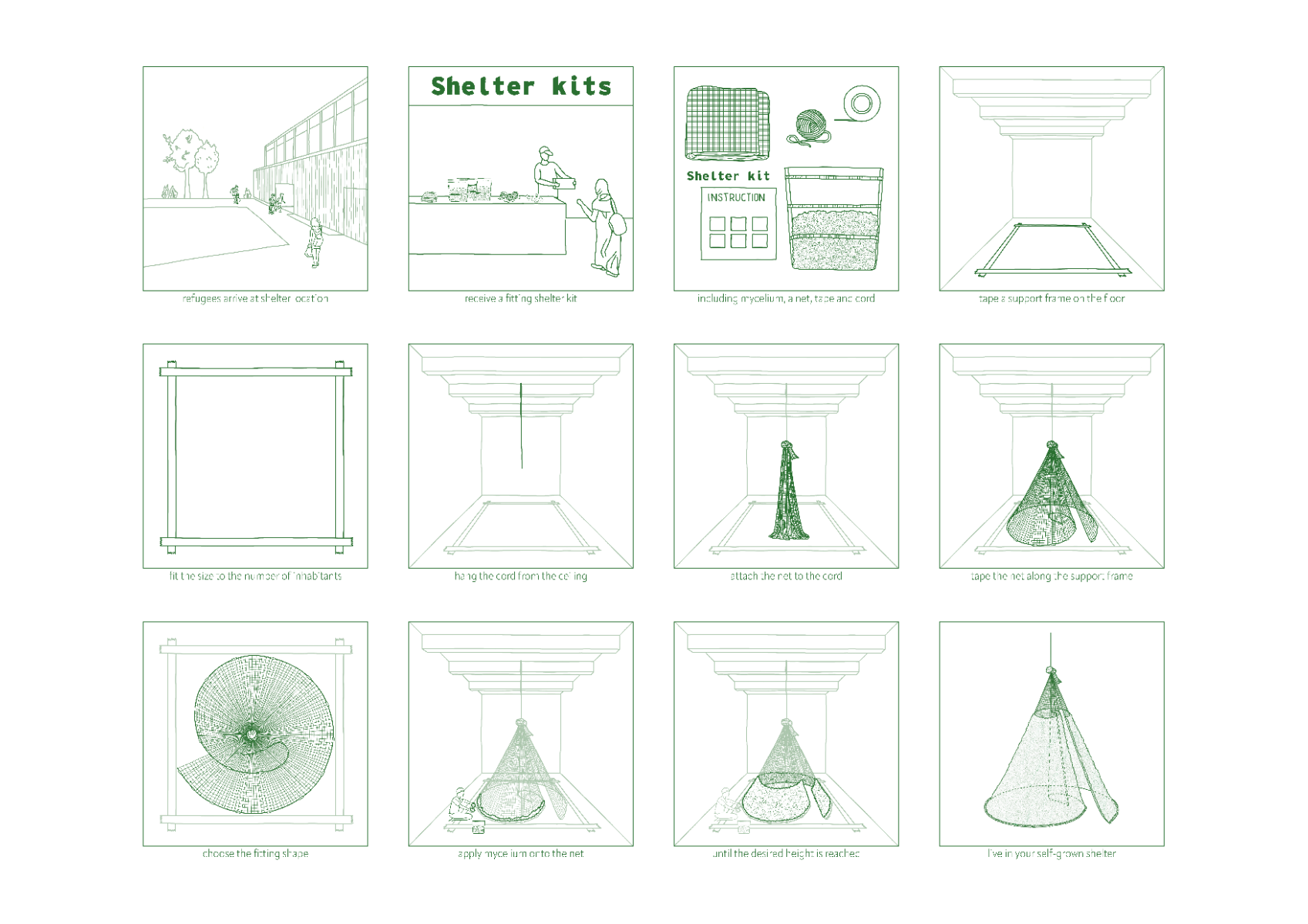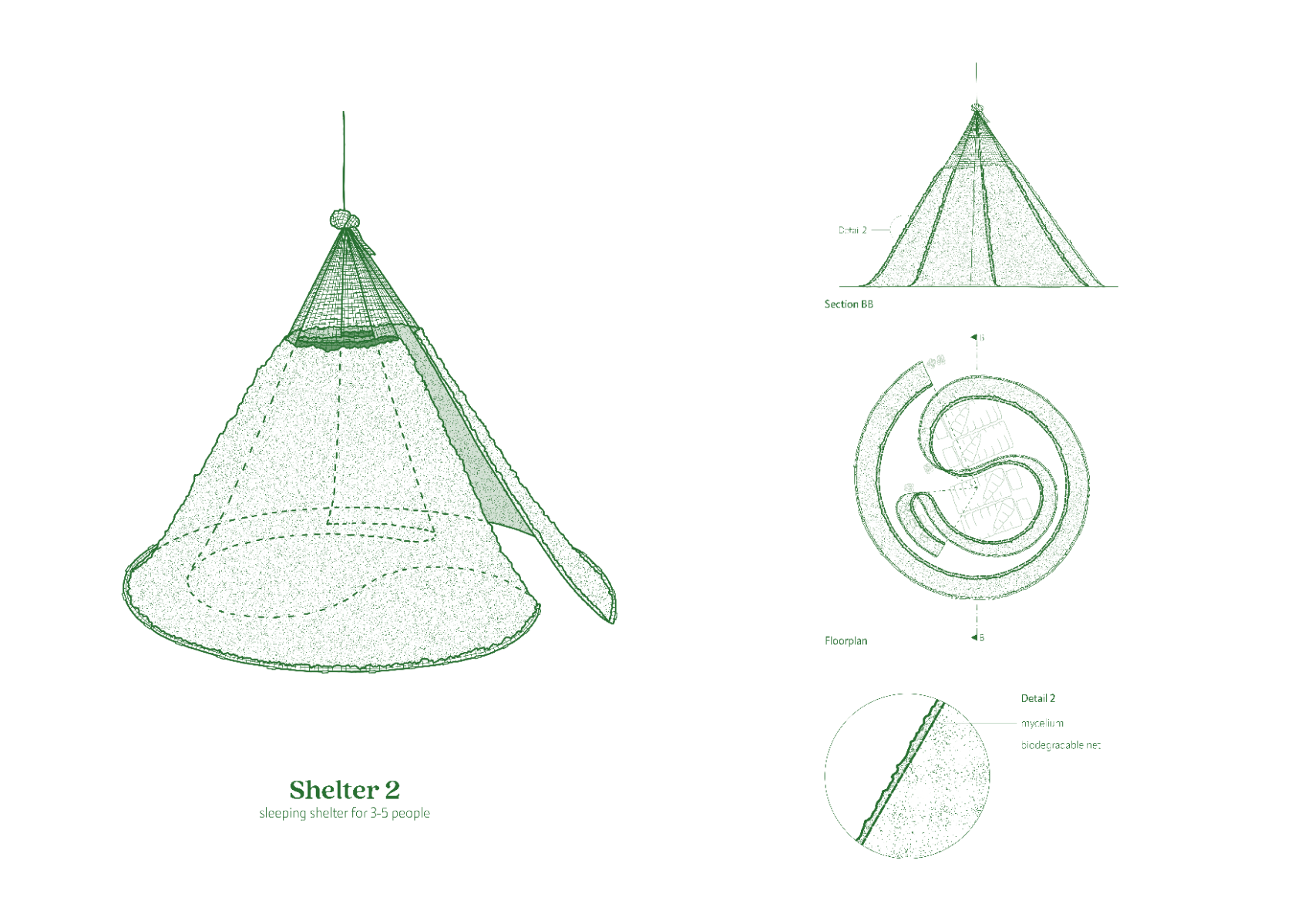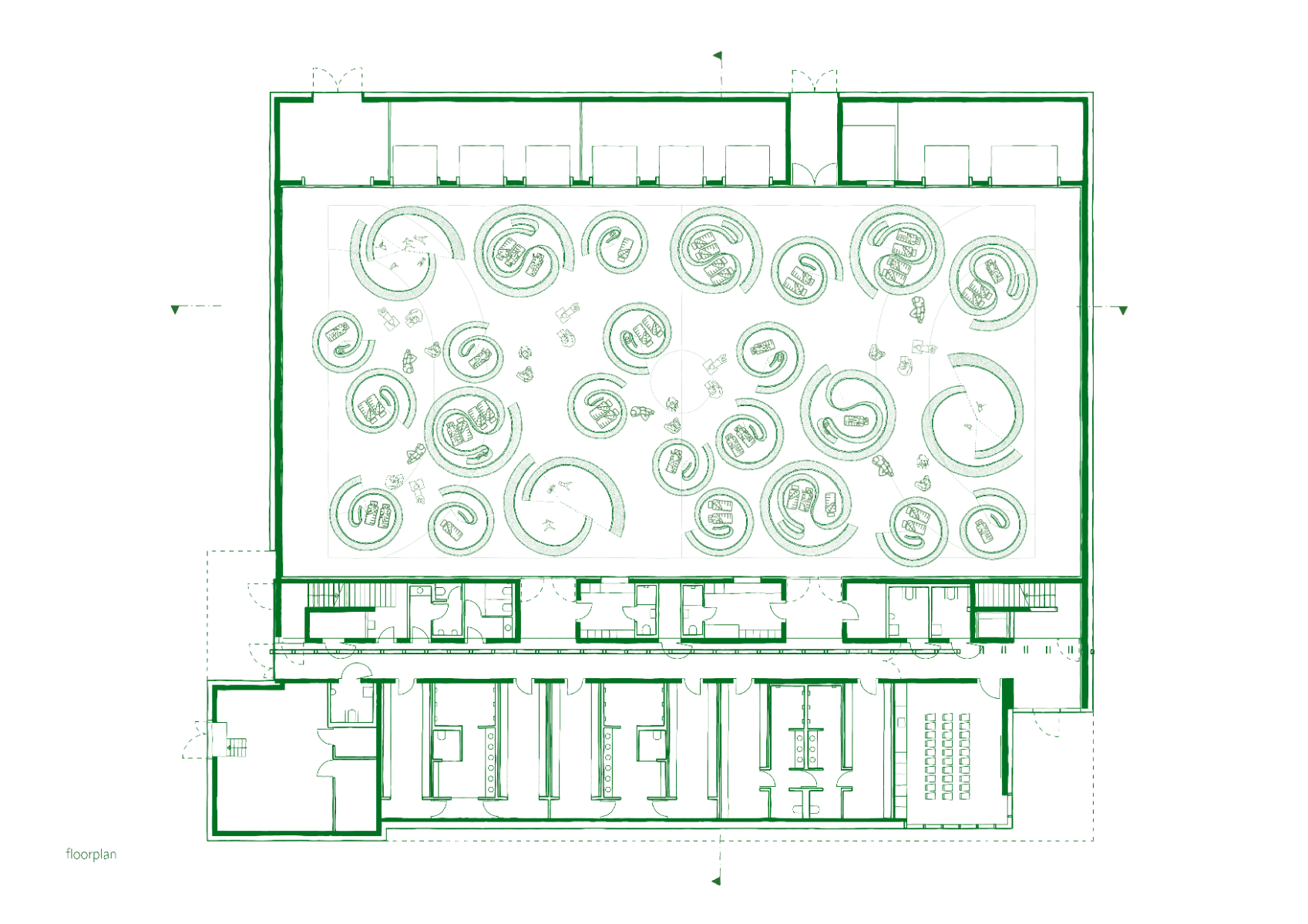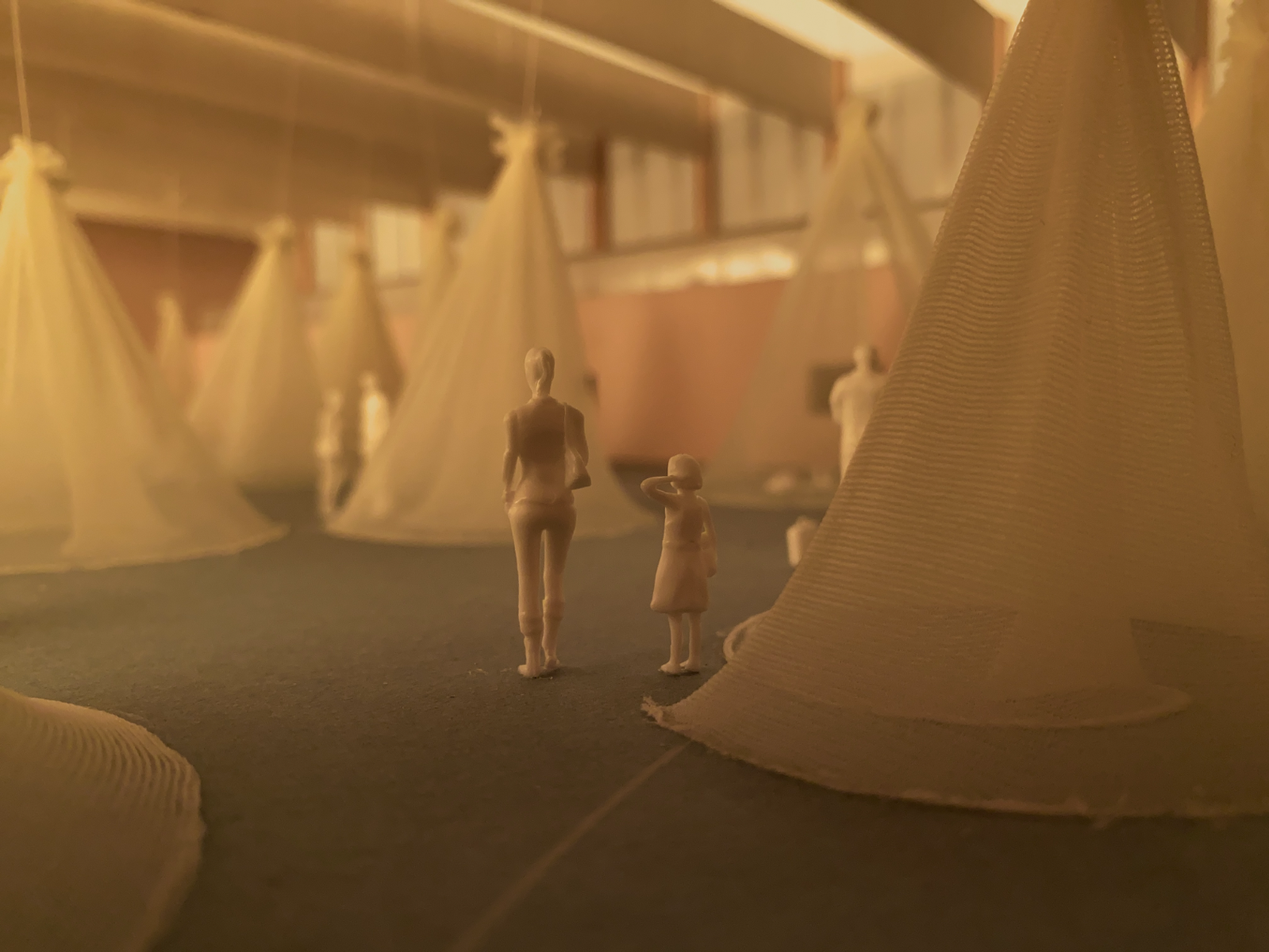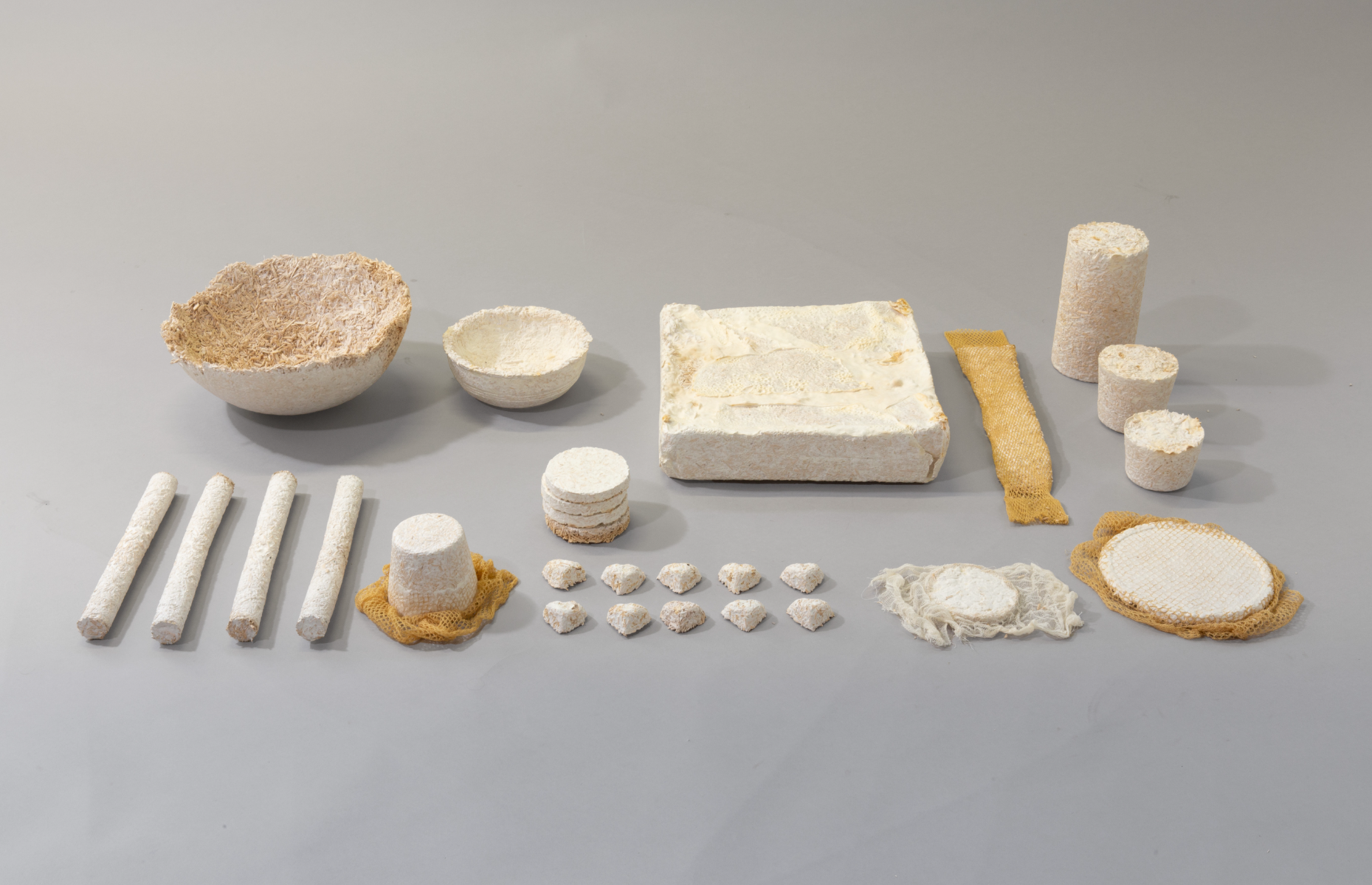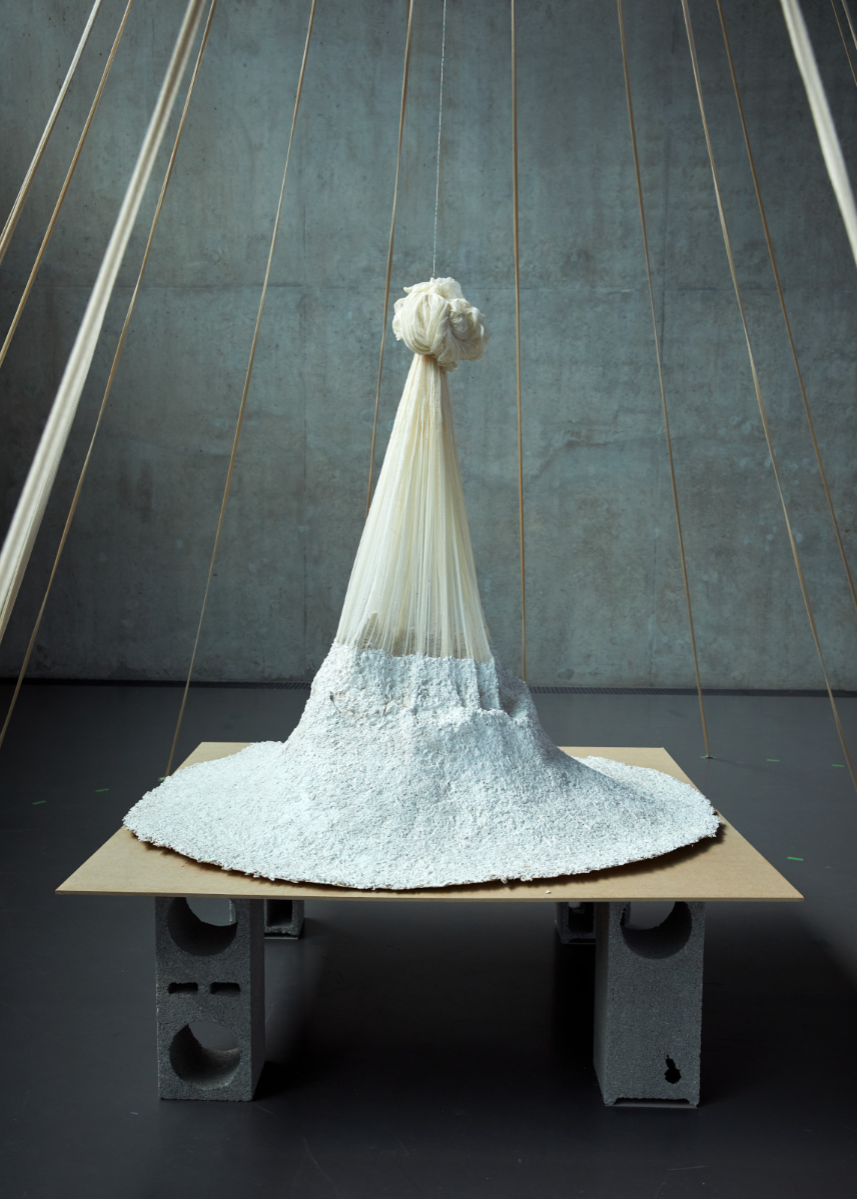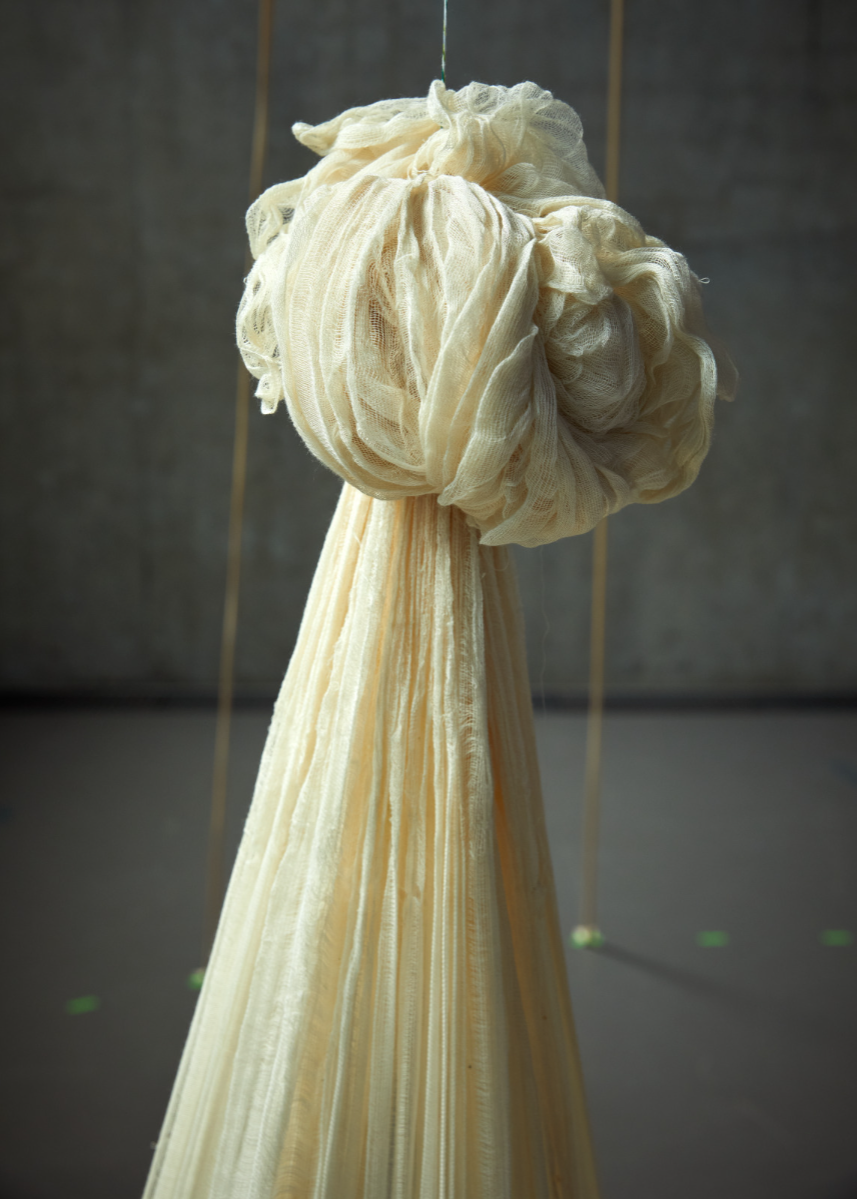Lisa Maahsen
Interior Architecture MA
HEAD – Genève
Graduates: 2023
Specialisms: Interior Architecture / Sustainable Design / Design for Social Good
My location: Zurich, Switzerland
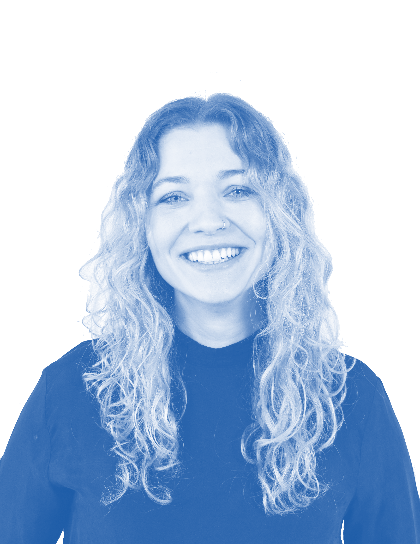

Lisa Maahsen

First Name: Lisa
Last Name: Maahsen
University / College: HEAD – Genève
Course / Program: Interior Architecture MA
Graduates: 2023
Specialisms: Interior Architecture / Sustainable Design / Design for Social Good
My Location: Zurich, Switzerland
About
Growing Shelter explores the possible applications of mycelium-grown elements for temporary shelters. It encourages us to rethink our perception of time in architectural design. The rapid growth characteristics of mycelium make it a suitable building material for structures that need to be set up quickly and taken down easily. The material requires little energy to grow and can be customised to fit a variety of uses. Mycelium-based structures help to reduce waste and minimise the environmental impact of temporary installations. The intensity and frequency of disasters, such as earthquakes, floods, and wars, have increased the need for shelter solutions. Existing evacuation plans provide emergency housing for a few nights, where people can wait to be relocated to transitional accommodation. However, many people end up staying in those emergency accommodations for months in poor conditions. The use of mycelium responds to the various issues facing contemporary shelters, i.e. noise, lack of privacy, and loss of connection. The project develops a method and an easily reproducible technical process to grow the shelter components directly on-site, where needed, within three days. A biodegradable net scaffold shapes the mycelium components into unique personal safe spaces.
Competitions


